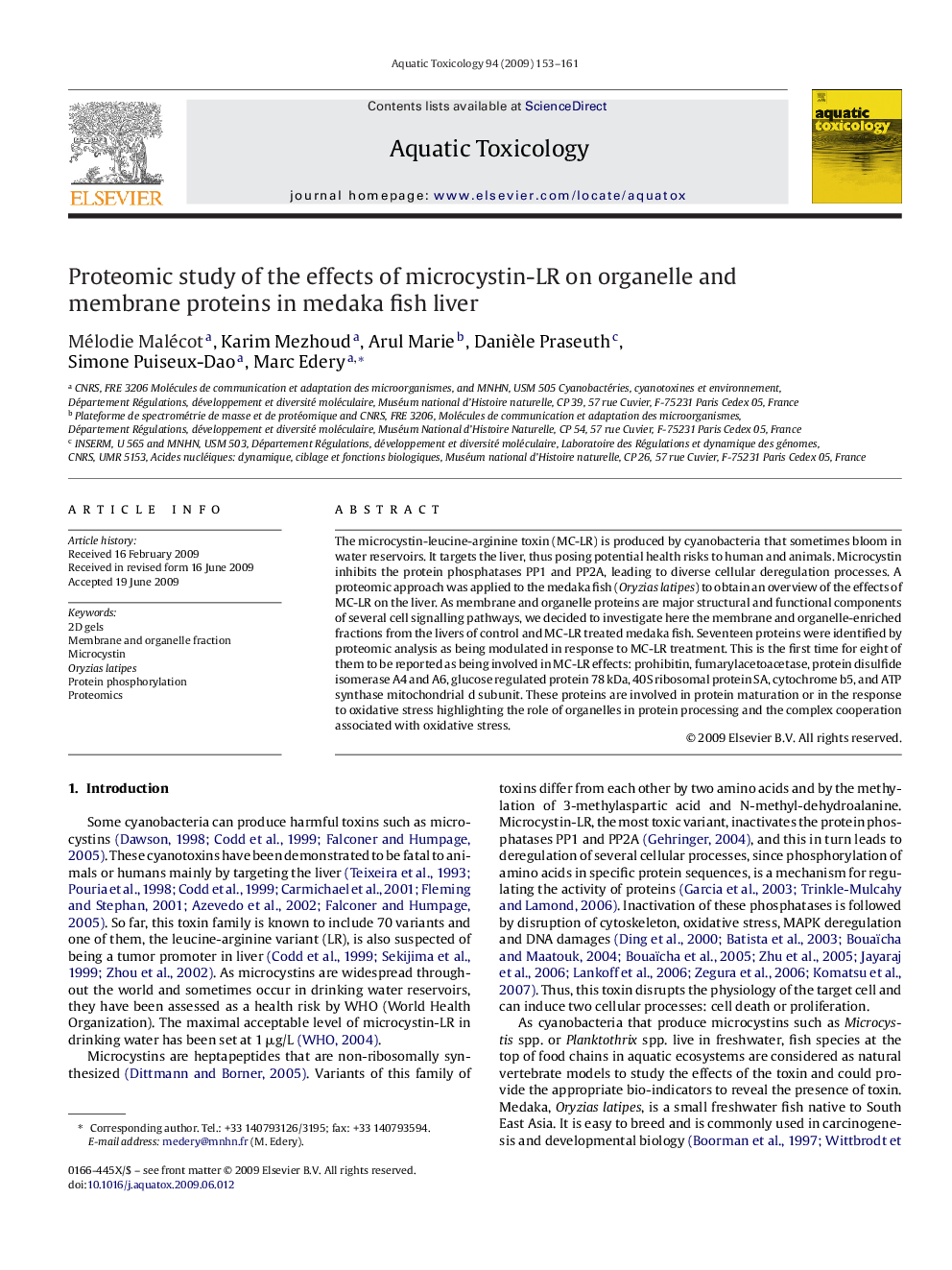| Article ID | Journal | Published Year | Pages | File Type |
|---|---|---|---|---|
| 4530502 | Aquatic Toxicology | 2009 | 9 Pages |
The microcystin-leucine-arginine toxin (MC-LR) is produced by cyanobacteria that sometimes bloom in water reservoirs. It targets the liver, thus posing potential health risks to human and animals. Microcystin inhibits the protein phosphatases PP1 and PP2A, leading to diverse cellular deregulation processes. A proteomic approach was applied to the medaka fish (Oryzias latipes) to obtain an overview of the effects of MC-LR on the liver. As membrane and organelle proteins are major structural and functional components of several cell signalling pathways, we decided to investigate here the membrane and organelle-enriched fractions from the livers of control and MC-LR treated medaka fish. Seventeen proteins were identified by proteomic analysis as being modulated in response to MC-LR treatment. This is the first time for eight of them to be reported as being involved in MC-LR effects: prohibitin, fumarylacetoacetase, protein disulfide isomerase A4 and A6, glucose regulated protein 78 kDa, 40S ribosomal protein SA, cytochrome b5, and ATP synthase mitochondrial d subunit. These proteins are involved in protein maturation or in the response to oxidative stress highlighting the role of organelles in protein processing and the complex cooperation associated with oxidative stress.
